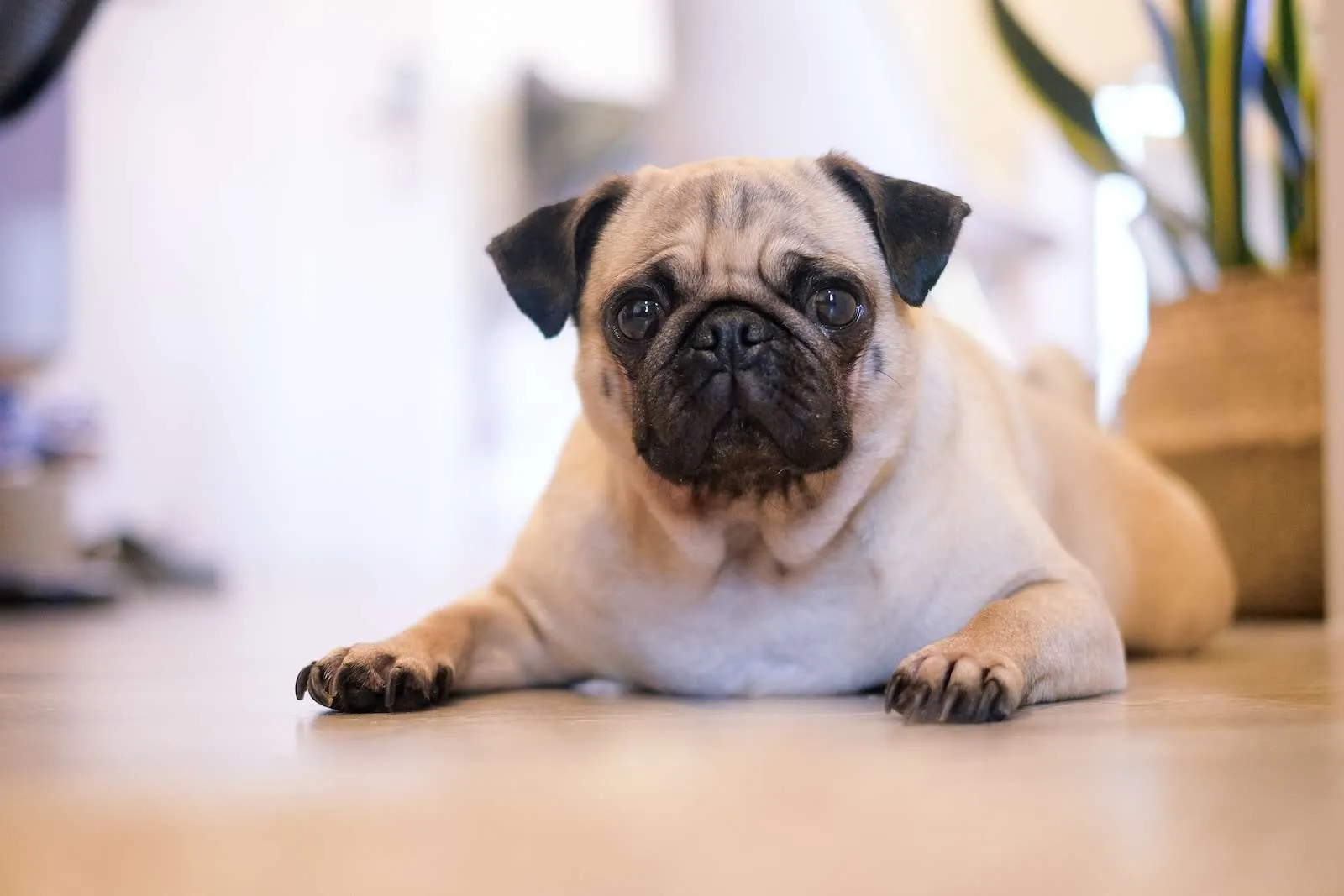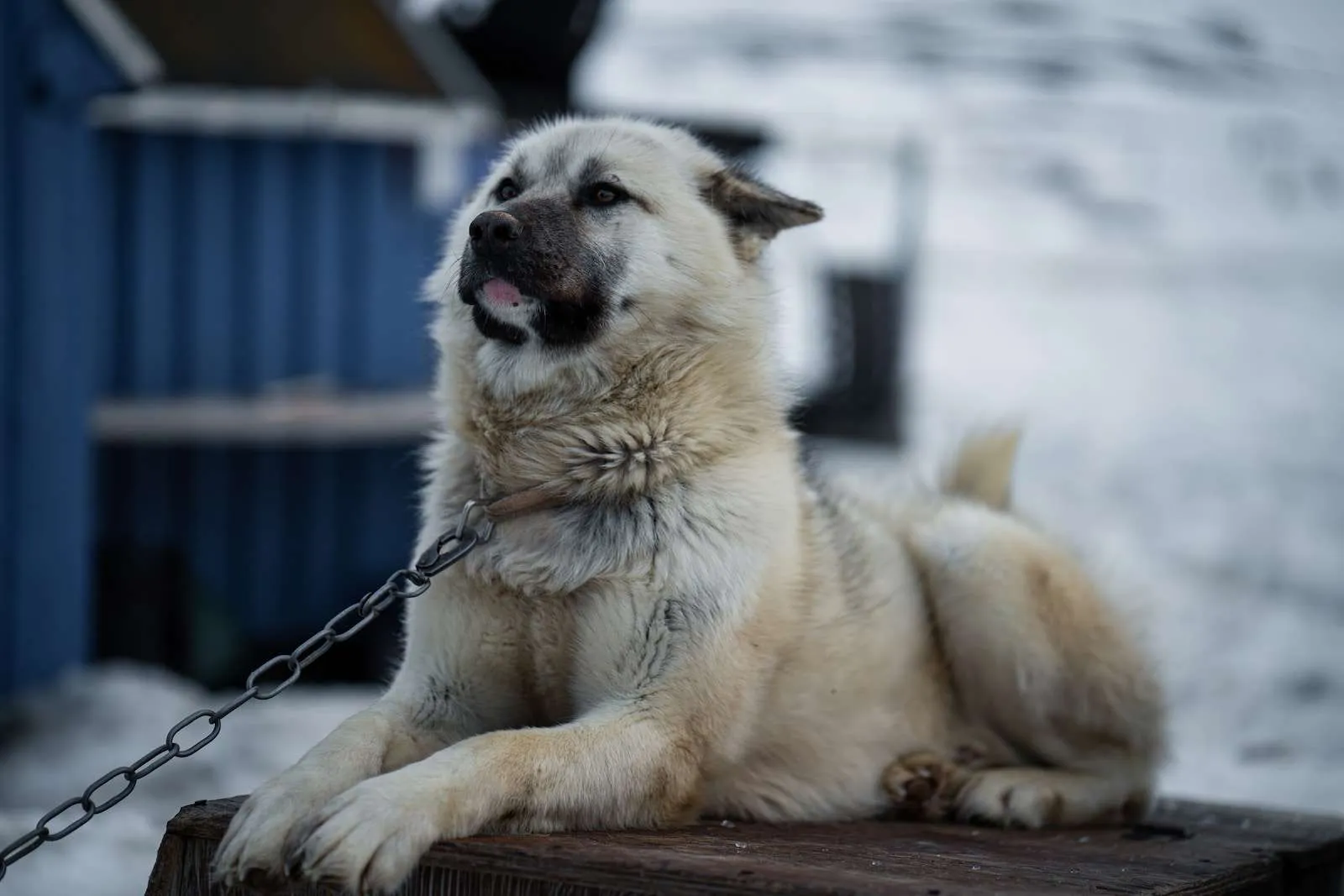Statistics:
- Height: 10 to 13 inches
- Weight: 14 to 18 pounds
- Life Span: 12 to 15 years
- Diet: Omnivorous (commercial dog food formulated for small breeds)
Pug Overview:
The Pug is a small, charming breed known for its wrinkled face, expressive eyes, and sturdy build. With a rich history dating back over 2000 years, the Pug has been a cherished companion of royalty and celebrities alike.
Compact and muscular, Pugs possess a unique appeal that’s been celebrated in art, literature, and culture. They are highly sociable dogs with a playful and loving nature, making them excellent family pets. Their distinctive appearance, combined with their lively personality, adds to their universal appeal.
Pug Highlights:
Pugs are often recognized by their short, smooth coat, curled tail, and their wrinkled, round face. Their large, dark eyes give them a curious and sometimes mischievous expression.
Aside from their physical attributes, Pugs are celebrated for their cheerful and affectionate temperament. They often form strong bonds with their families, seeking constant companionship. Their playful and sometimes clownish behavior endears them to children and adults alike.
Pug Evolution and History:
The Pug’s origin dates back to ancient China, where they were treasured by emperors and often portrayed in paintings and sculptures. Bred as companions for royalty, Pugs lived luxurious lives, guarded by soldiers, and were even given ranks in the imperial court.
Introduced to Europe in the 16th century, the Pug became a favorite among European monarchs and played a significant role in various royal courts. Their history and association with royalty only add to the breed’s mystique and charm.
Pug Size and Weight:
Pugs are compact dogs, standing between 10 to 13 inches tall and weighing between 14 to 18 pounds. Despite their small size, they have a robust and muscular build, giving them a sturdy appearance.
Their size makes them suitable for apartment living, but their exercise needs and potential for weight gain must be carefully managed. They are small but not delicate, and their physicality is a defining aspect of their breed.
Pug Personality:
The Pug’s personality is often described as larger than life. Despite their small size, they have a big, vivacious character, filled with curiosity, playfulness, and affection.
They are known to be loyal and loving companions who thrive on human interaction. Pugs are often considered to be particularly good with children, and their friendly disposition generally makes them sociable with strangers and other pets.
The Adaptability of the Pug:
Pugs are highly adaptable dogs, capable of fitting into various living situations and family dynamics. They do well in apartments or houses and can thrive in both urban and suburban settings.
Their loving nature and moderate exercise needs make them suitable for families, singles, or seniors. However, their sensitivity to extreme temperatures, particularly heat, should be taken into consideration when assessing their adaptability to different environments.
Pug Temperament:
The temperament of the Pug is characterized by its cheerful, affectionate, and sometimes mischievous nature. They have a strong desire to be part of the family and often follow their owners from room to room.
While generally easygoing, they can be quite stubborn at times. Early training and socialization help ensure a well-behaved Pug that is both confident and comfortable in various social settings.
Pug Maintenance and Grooming:
Despite their short coat, Pugs require regular grooming due to their tendency to shed. Regular brushing helps manage shedding and keeps their coat healthy.
Their facial wrinkles need particular care to prevent infection, requiring regular cleaning. Their nails, ears, and teeth also need routine care. Overall, while not high maintenance, Pugs do have specific grooming needs that must be attended to regularly.
The Trainability of the Pug:
Training a Pug can be both a joy and a challenge. Their intelligent and curious nature makes them quick learners, but their stubborn streak can sometimes hinder training progress.
Using positive reinforcement and keeping training sessions fun and engaging can lead to success. Early socialization and obedience training are essential for developing a well-mannered and confident Pug.
Exercise Needs of the Pug:
Though not overly active, Pugs do require regular exercise to maintain a healthy weight and satisfy their playful nature. Short walks, playtime, and mental stimulation are usually sufficient to keep them happy.
Their sensitivity to heat necessitates caution during hot weather, and exercise should be adjusted accordingly. Providing appropriate exercise while being mindful of their physical limitations is key to their well-being.
Pug Health:
- General Statement about the health of this breed: Pugs are generally healthy but prone to certain breed-specific issues.
- Brachycephalic Syndrome: Due to their shortened snout, Pugs may suffer from breathing problems. Regular monitoring and appropriate care can manage this condition.
- Hip Dysplasia: This is a common issue in Pugs that can lead to arthritis and pain. Maintaining a healthy weight and regular vet check-ups can help prevent and manage this issue.
- Eye Problems: Their prominent eyes can be prone to various issues, including corneal ulcers. Regular eye care and prompt attention to any issues can prevent serious complications.
Pug Care:
Caring for a Pug involves meeting their specific needs related to exercise, diet, grooming, and health monitoring. Regular vet check-ups, attention to their diet, and understanding their sensitivity to temperature are vital aspects of their care.
Providing mental stimulation, affection, and ensuring that their unique physical characteristics are properly cared for will ensure a happy and healthy Pug.
Pug Feeding:
Feeding a Pug requires attention to their tendency to gain weight. A balanced diet designed for small breeds, properly portioned, can meet their nutritional needs.
Avoiding table scraps and monitoring their weight will help prevent obesity, a common issue in the breed. Consultation with a veterinarian can provide guidance on the best diet for an individual Pug.
Pug Coat Color and Grooming:
Pugs typically have a short and smooth coat that comes in fawn, black, apricot, or silver. Regular brushing helps manage shedding and keeps the coat shiny.
Their facial wrinkles need specific attention and regular cleaning to prevent infections. Overall, their grooming needs are moderate but require consistency.
Pug and Children:
Pugs often make wonderful pets for families with children. Their playful and gentle nature makes them enjoyable companions for kids of all ages.
Supervision during interactions is always wise, especially with younger children, to ensure gentle handling. The Pug’s affectionate nature and love for play make them well-suited to family life, provided that respectful relationships are encouraged.
Pug and Other Pets:
Pugs typically get along well with other pets, including other dogs and even cats. Their social and non-aggressive nature often leads to harmonious relationships with other animals in the household.
Early socialization and proper introductions can help ensure positive relationships between a Pug and other pets. Their accepting and amiable disposition usually translates to a peaceful coexistence with other animals.
Similar Dogs:
- French Bulldog: Similar to Pugs, French Bulldogs have a brachycephalic head structure and are known for their affectionate and playful nature. Both breeds are well-suited for apartment living and make excellent companions.
- Boston Terrier: Boston Terriers share the Pug’s sociable and friendly temperament. Their similar size and exercise needs, along with their affection for human interaction, make them comparable companions.
- Bulldog: Although larger than the Pug, Bulldogs share the breed’s gentle and easy-going nature. Their distinctive appearance and unique charm, combined with their suitability as family pets, make them similar in many respects.
In conclusion, the Pug’s enduring popularity as a companion dog is a testament to its appealing appearance, loving nature, and adaptable personality. Whether a loyal friend to a single owner or a cherished member of a large family, the Pug’s joyful disposition and unique characteristics have endeared it to people around the world. Its rich history, distinctive appearance, and engaging personality make the Pug a breed that continues to be treasured and celebrated.


